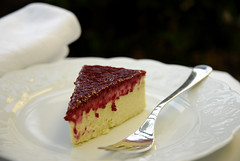 The jabuticaba (also called Brazilian Grape Tree, Jaboticaba) is a fruit-bearing tree native to the Minas Gerais region near Rio de Janeiro in southern Brazil. The fruit averages size is one inch in diameter but can run from 3/4 to 1-1/2 inches, grape-like in appearance and texture but with a thicker, purplish black skin. The gelatinous whitish pulp contains usually one seed and has a pleasant sweet flavor. The skin is high in tannin and has a slight resinous flavor. Common in Brazilian markets, jabuticabas are largely eaten fresh and are very popular. Fresh fruit may begin to ferment 3 to 4 days after harvest, so they are often used to make delicious jams, strong wines, and liqueurs. It is very healthy, several potent antioxidant and anti-inflammatory anti-cancer compounds have been isolated from the fruit and traditionally, an astringent decoction of the sun-dried skins has been used as a treatment for hemoptysis, asthma, diarrhea, and gargled for chronic inflammation of the tonsils. Besides the consumption of the fruits the beautiful tree, with the fruits growing directly on the main trunks and branches of the plant, is very popular, everybody would like to have one in their garden. Some say it brings good luck, but I only know it brings a lot of birds that love the fruit. Maybe it attracted tortoises in the past since the name is derived from the Tupi(Brazilian Indian´s language)word Jabuti (tortoise) + Caba (place), meaning the place where you find tortoises!
The jabuticaba (also called Brazilian Grape Tree, Jaboticaba) is a fruit-bearing tree native to the Minas Gerais region near Rio de Janeiro in southern Brazil. The fruit averages size is one inch in diameter but can run from 3/4 to 1-1/2 inches, grape-like in appearance and texture but with a thicker, purplish black skin. The gelatinous whitish pulp contains usually one seed and has a pleasant sweet flavor. The skin is high in tannin and has a slight resinous flavor. Common in Brazilian markets, jabuticabas are largely eaten fresh and are very popular. Fresh fruit may begin to ferment 3 to 4 days after harvest, so they are often used to make delicious jams, strong wines, and liqueurs. It is very healthy, several potent antioxidant and anti-inflammatory anti-cancer compounds have been isolated from the fruit and traditionally, an astringent decoction of the sun-dried skins has been used as a treatment for hemoptysis, asthma, diarrhea, and gargled for chronic inflammation of the tonsils. Besides the consumption of the fruits the beautiful tree, with the fruits growing directly on the main trunks and branches of the plant, is very popular, everybody would like to have one in their garden. Some say it brings good luck, but I only know it brings a lot of birds that love the fruit. Maybe it attracted tortoises in the past since the name is derived from the Tupi(Brazilian Indian´s language)word Jabuti (tortoise) + Caba (place), meaning the place where you find tortoises!
Jabuticaba
 The jabuticaba (also called Brazilian Grape Tree, Jaboticaba) is a fruit-bearing tree native to the Minas Gerais region near Rio de Janeiro in southern Brazil. The fruit averages size is one inch in diameter but can run from 3/4 to 1-1/2 inches, grape-like in appearance and texture but with a thicker, purplish black skin. The gelatinous whitish pulp contains usually one seed and has a pleasant sweet flavor. The skin is high in tannin and has a slight resinous flavor. Common in Brazilian markets, jabuticabas are largely eaten fresh and are very popular. Fresh fruit may begin to ferment 3 to 4 days after harvest, so they are often used to make delicious jams, strong wines, and liqueurs. It is very healthy, several potent antioxidant and anti-inflammatory anti-cancer compounds have been isolated from the fruit and traditionally, an astringent decoction of the sun-dried skins has been used as a treatment for hemoptysis, asthma, diarrhea, and gargled for chronic inflammation of the tonsils. Besides the consumption of the fruits the beautiful tree, with the fruits growing directly on the main trunks and branches of the plant, is very popular, everybody would like to have one in their garden. Some say it brings good luck, but I only know it brings a lot of birds that love the fruit. Maybe it attracted tortoises in the past since the name is derived from the Tupi(Brazilian Indian´s language)word Jabuti (tortoise) + Caba (place), meaning the place where you find tortoises!
The jabuticaba (also called Brazilian Grape Tree, Jaboticaba) is a fruit-bearing tree native to the Minas Gerais region near Rio de Janeiro in southern Brazil. The fruit averages size is one inch in diameter but can run from 3/4 to 1-1/2 inches, grape-like in appearance and texture but with a thicker, purplish black skin. The gelatinous whitish pulp contains usually one seed and has a pleasant sweet flavor. The skin is high in tannin and has a slight resinous flavor. Common in Brazilian markets, jabuticabas are largely eaten fresh and are very popular. Fresh fruit may begin to ferment 3 to 4 days after harvest, so they are often used to make delicious jams, strong wines, and liqueurs. It is very healthy, several potent antioxidant and anti-inflammatory anti-cancer compounds have been isolated from the fruit and traditionally, an astringent decoction of the sun-dried skins has been used as a treatment for hemoptysis, asthma, diarrhea, and gargled for chronic inflammation of the tonsils. Besides the consumption of the fruits the beautiful tree, with the fruits growing directly on the main trunks and branches of the plant, is very popular, everybody would like to have one in their garden. Some say it brings good luck, but I only know it brings a lot of birds that love the fruit. Maybe it attracted tortoises in the past since the name is derived from the Tupi(Brazilian Indian´s language)word Jabuti (tortoise) + Caba (place), meaning the place where you find tortoises!
Subscribe to:
Post Comments (Atom)





No comments:
Post a Comment